

Cyclone Debbie: 'Monster' storm batters Australia. A powerful cyclone carrying winds of up to 263km/h (163 mph) has made landfall in Queensland, Australia.
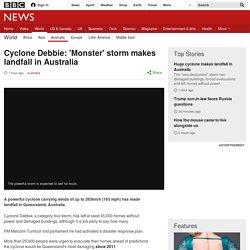
Cyclone Debbie, a category four storm, has left at least 45,000 homes without power and damaged buildings, although it is too early to say how many. PM Malcolm Turnbull told parliament he had activated a disaster response plan. More than 25,000 people were urged to evacuate their homes ahead of predictions the cyclone would be Queensland's most damaging since 2011. Coastal Management. <div class="crappy-browser-warning-box"><p>You seem to have disabled JavaScript.
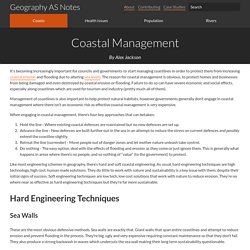
You should really enable it for this site but <i>most</i> things should work without it. </p></div> It’s becoming increasingly important for councils and governments to start managing coastlines in order to protect them from increasing coastal erosion and flooding due to altering sea levels. The reason for coastal management is obvious, to protect homes and businesses from being damaged and even destroyed by coastal erosion or flooding. Failure to do so can have severe economic and social effects, especially along coastlines which are used for tourism and industry (pretty much all of them). Management of coastlines is also important to help protect natural habitats, however governments generally don’t engage in coastal management where there isn’t an economic risk as effective coastal management is very expensive. When engaging in coastal management, there’s four key approaches that can betaken: Sea Walls Riprap.
Floating Dutchmen: Holland builds homes on water. How Holland adapts to climate change.mov. Islands disappear under rising seas. By Environment Correspondent Alex Kirby Two South Pacific islands have disappeared beneath the waves, as climate change raises sea levels to new heights.
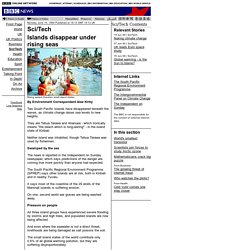
They are Tebua Tarawa and Abanuea - which ironically means "the beach which is long-lasting" - in the island state of Kiribati. Neither island was inhabited, though Tebua Tarawa was used by fishermen. Swamped by the sea The news is reported in the Independent on Sunday newspaper, which says predictions of the danger are coming true more quickly than anyone had expected. The South Pacific Regional Environment Programme (SPREP) says other islands are at risk, both in Kiribati and in nearby Tuvalu. It says most of the coastline of the 29 atolls of the Marshall Islands is suffering erosion. On one, second world war graves are being washed away. Pressure on people All three island groups have experienced severe flooding by storms and high tides, and populated islands are now being affected.
They cannot afford to protect themselves. 830921 GF756 EXT. Sea Level Change. <div class="crappy-browser-warning-box"><p>You seem to have disabled JavaScript.
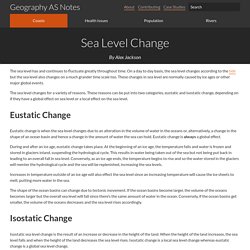
You should really enable it for this site but <i>most</i> things should work without it. </p></div> The sea level has and continues to fluctuate greatly throughout time. On a day to day basis, the sea level changes according to the tide but the sea level also changes on a much grander time scale too. These changes in sea level are normally caused by ice ages or other major global events. The sea level changes for a variety of reasons. Eustatic Change Eustatic change is when the sea level changes due to an alteration in the volume of water in the oceans or, alternatively, a change in the shape of an ocean basin and hence a change in the amount of water the sea can hold. During and after an ice age, eustatic change takes place.
Increases in temperature outside of an ice age will also effect the sea level since an increasing temperature will cause the ice sheets to melt, putting more water in the sea. The Future. Sign In - ClickView. Sub-Aerial Processes. Sub-aerial process are land based processes which alter the shape of the coastline.
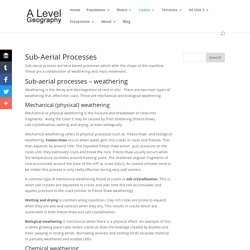
These are a combination of weathering and mass movement. Sub-aerial processes – weathering Weathering is the decay and disintegration of rock in situ. There are two main types of weathering that affect the coast. These are mechanical and biological weathering. Mechanical (physical) weathering Mechanical or physical weathering is the fracture and breakdown of rocks into fragments. Mechanical weathering refers to physical processes such as freeze-thaw and biological weathering. A common type of mechanical weathering found at coasts is salt crystallisation.